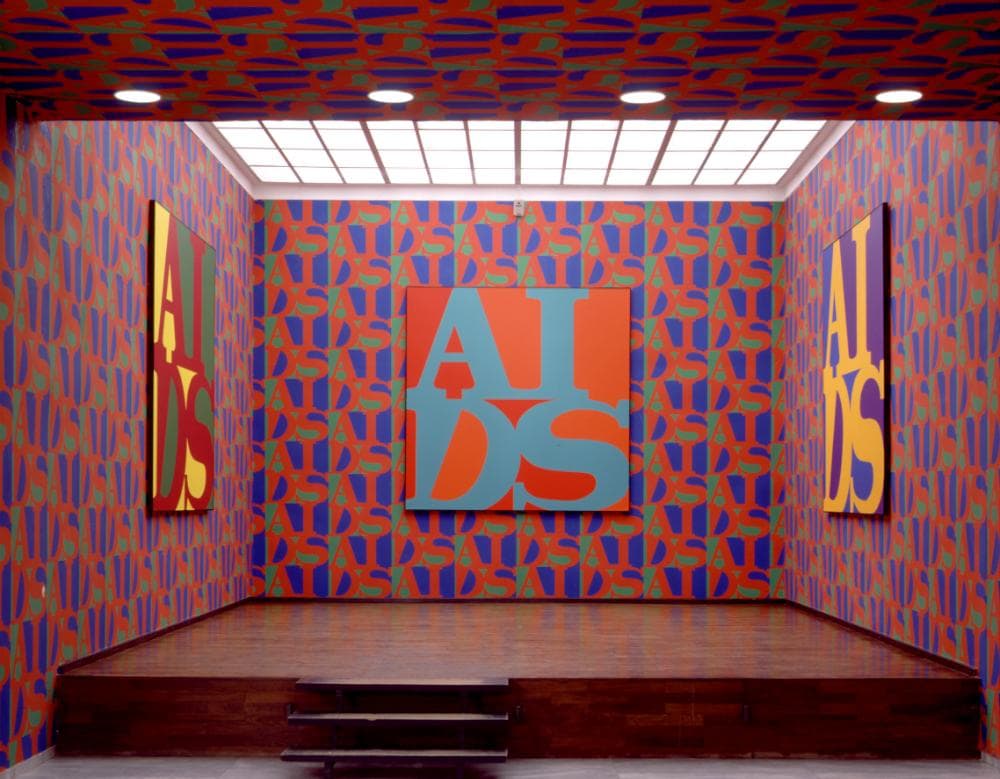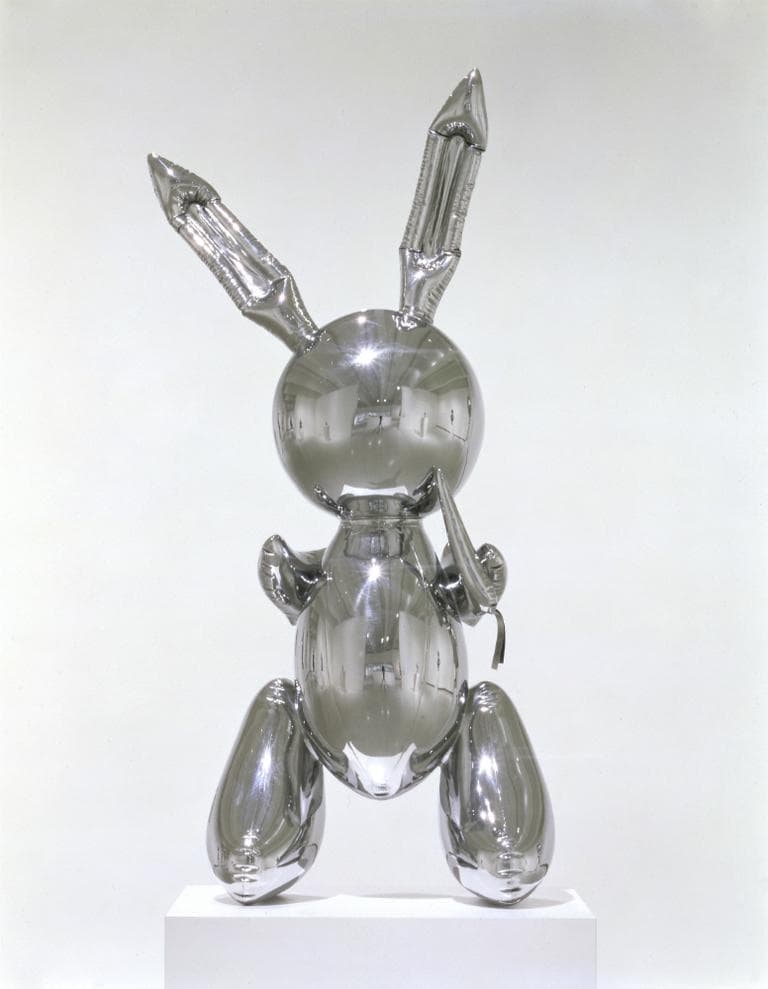Advertisement
Flashback To The '80s: Art, Love, Politics
Resume"This Will Have Been: Art, Love, and Politics in the 1980s" is the new exhibition at the Institute of Contemporary Art.
"The installation definitely evokes the excessive, messy quality of the period," said Helen Molesworth, the ICA's chief curator and curator of "This Will Have Been."
Walking through the exhibit, you are reminded that the '80s was also decade of unfettered capitalism, culture wars, the threat of mutually assured nuclear destruction and an apocalyptic AIDS epidemic.
"The show is a tricky show. On the one hand it's very personal and political and partisan," Molesworth said. "It's my version of the '80s — and I say as much, and I don't mean it to be definitive in any way. On the other hand, it tries to reassess the decade and give us a new way of looking at it."
From Hippies To Hip Hop

The apocalyptic section of the exhibit is entitled "The End Is Near," which includes "AIDS Wallpaper," an installation by General Ideas.
"They've taken the very famous iconic Robert Indiana LOVE logo, and instead of LOVE they've written AIDS," Molesworth explained. "They've produced it as wallpaper so that it's literally in the background of all cultural life, all social life."
"One of the things the '80s is is really the end of the '60s," she continued. "The end of the hippie generation. The end of peace, love and happiness. The end of drop out, tune in, turn on. The end of that version of the counter culture. Instead, you have punk and hip hop emerge, offering a very different model of what the counterculture might look like."
The Forgotten Decade?
"There's a huge embarrassment factor on the '80s," Molesworth admitted. "When I told people I was working on an '80s show, they would invariably cringe and make a joke. There was a snap dismissal of the period."
According to Molesworth, the art world has refused to deal with the '80s because there is a two-pronged understanding of the decade.
"There was this really hardcore money '80s where the galleries got really big, the artists got really famous, and there was huge influx of money into the art world. And gone was the bohemian character of the art world," she explained.
In addition to the AIDS crisis, Molesoworth said the decade gets pushed aside because of how pivotal it was to the current state of the economy.
"We're living through one of the world's greatest financial crises. And the fact of the matter is that many of the tools and instruments and regulations that brought us to this financial crisis were, in fact, begun in the 1980s," she explained. "Looking back at the '80s is partly a way of looking back at the pre-history of our current moment — and I kind of think we don't want to do it."
The 'Ultimate' Icon Of The '80s

Molesworth pointed out "Rabbit," a sculpture by Jeff Koons, which she said many regard as the "most iconic objects of the decade."
"It's a three-foot high, solid stainless steel, dipped in chrome — so incredibly shiny — sculpture of a blowup plastic bunny. Many people when they first look at it don't understand it's actually solid metal. They think it's a balloon of some sort...Like a television, it draws all the attention in the room to it — so it's really omnipotent."
The metal surface is highly reflective, and Molesworth noted that, "You get this narcissistic pleasure of seeing yourself."
"It's like the ultimate '80s object," she concluded. "It's excessive, it's meaningless, it's about a meaningless thing. It's about a totally transitory object that gets thrown away and ruins the environment in some landfill."
Yet Molesworth recognized that this wasn't entirely a bad thing.
"If the only thing that exists in this whole show 100 years from now — 1,000 or 5,000 years from now — is that bunny, people might have a fairly good idea of who we were and what we were about in the 1980s."
"This Will Have Been: Art, Love, and Politics in the 1980s" at the Institute of Contemporary Art runs through March 3, 2013.
Guest:
- Helen Molesworth, chief curator at the Institute of Contemporary Art
More:
This segment aired on November 21, 2012.